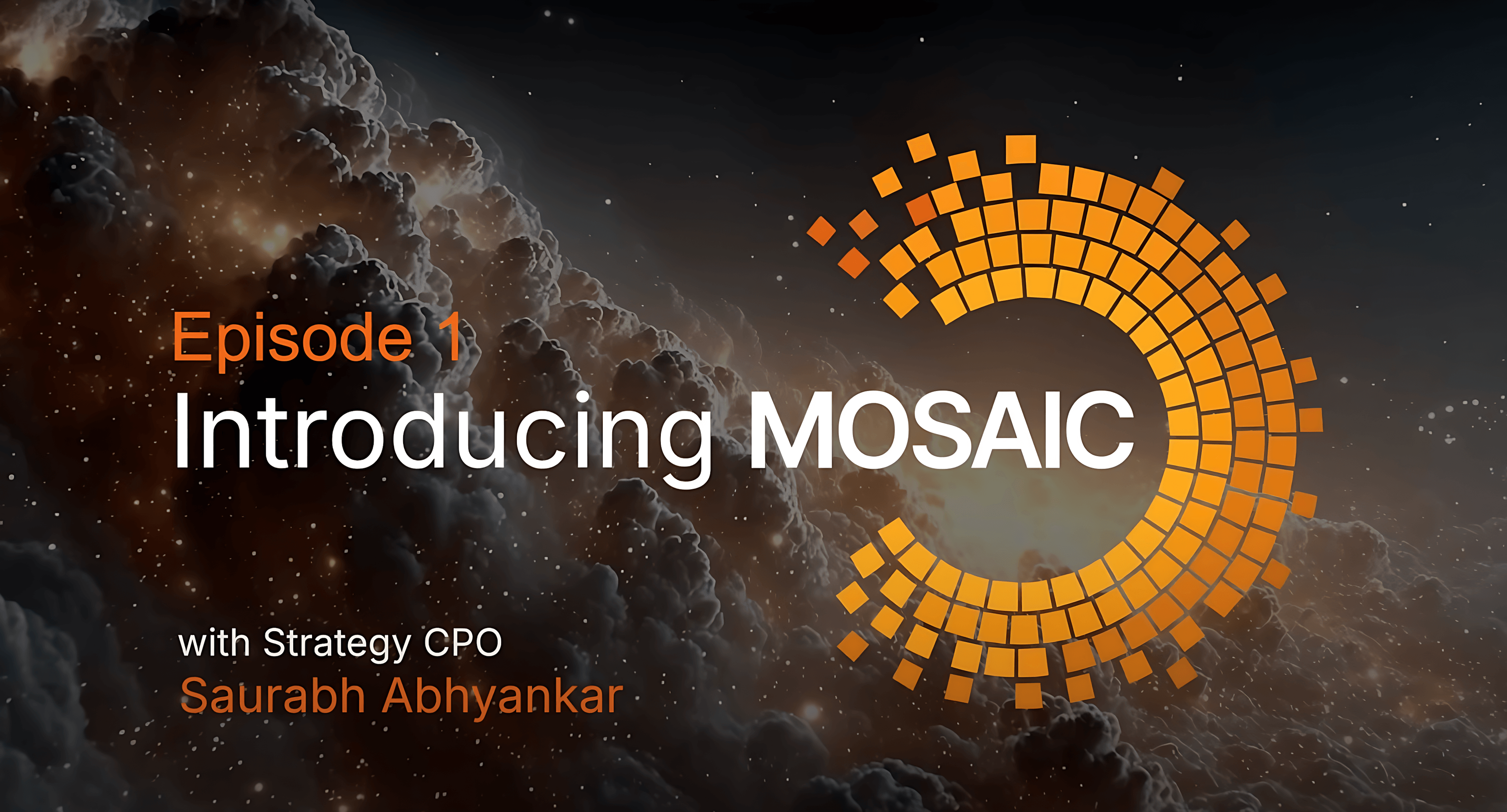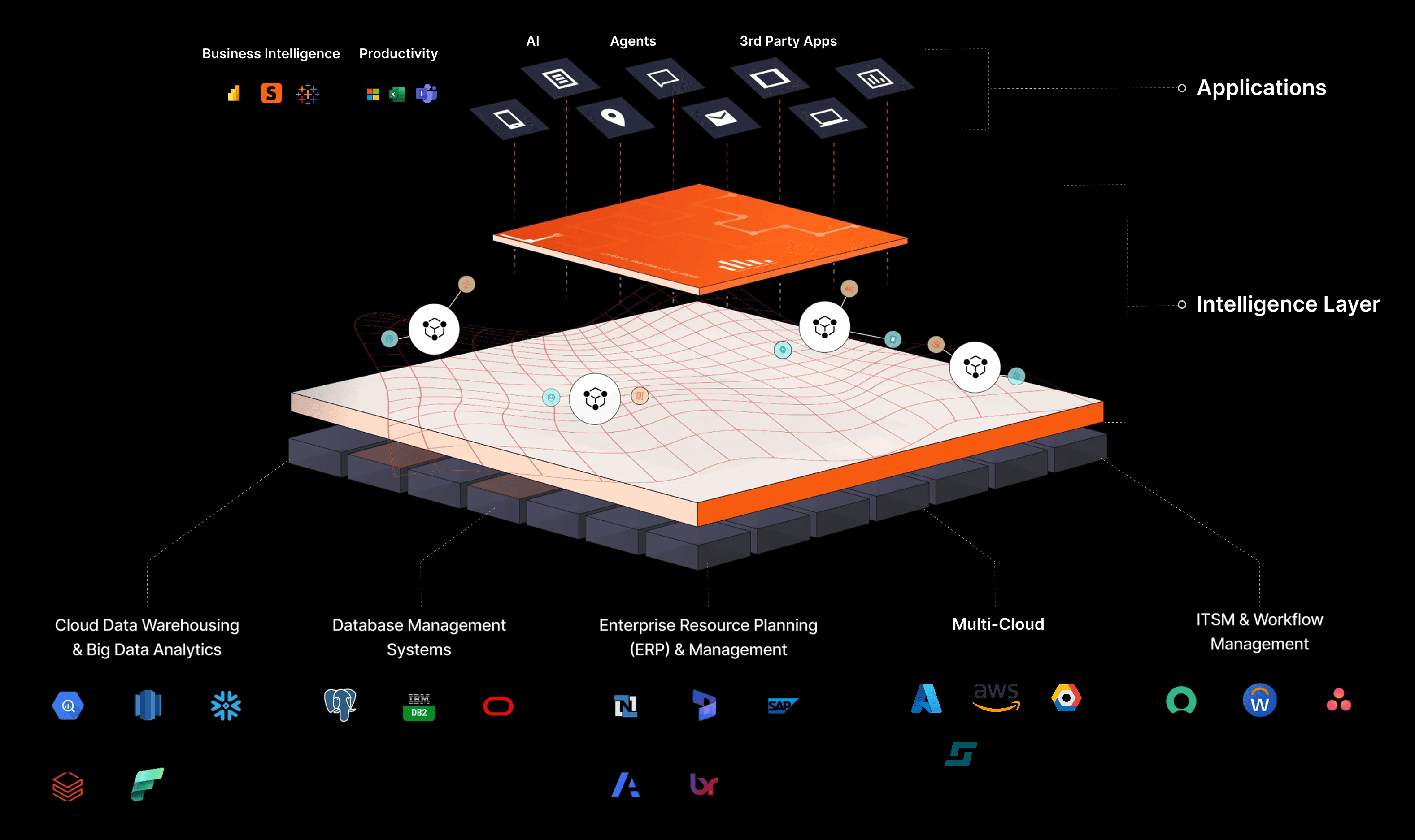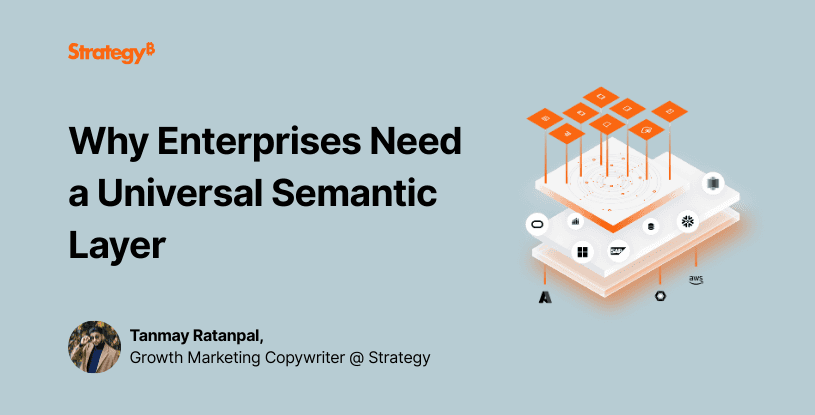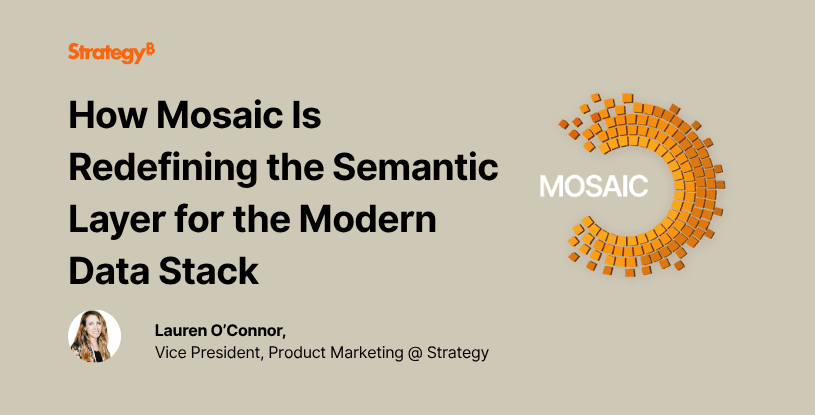Strategy Launches the Worlds First Universal Intelligence Layer
Strategy Executive Vice President & Chief Product Officer Saurabh Abhyankar discusses the launch of Strategy Mosaic, the world’s first Universal Intelligence Layer. From enterprise-grade security to AI enablement, discover how Mosaic unlocks seamless data access and connects everything, everywhere.
As Strategy prepares to launch Mosaic in June 2025, Beata Socha sat down with Saurabh Abhyankar to talk about what Mosaic is, what it does, and how it’s designed to shape the future of enterprise data infrastructure.

So, what is Mosaic? How would you describe it to a data leader experiencing it for the first time?
Saurabh Abhyankar: We call Mosaic the world’s first Universal Intelligence Layer. Think of it as a modular, open platform that connects to any data source, works with any BI or productivity tool, and supports AI and analytics use cases equally well.
Mosaic brings together data virtualization, semantic modeling, advanced calculations, and governance. It’s open at both ends of the stack—so it can run on any cloud and integrate with any front-end tool, whether that’s Power BI, Excel, Google Sheets, or Strategy One.
You’ve said that Mosaic is a new chapter for Strategy. Can you explain what that means?
Saurabh Abhyankar: Mosaic is our first major expansion into an adjacent market in a long time. For over 30 years, Strategy has focused on business intelligence—we helped define that space. Along the way, we built powerful technologies: a universal semantic layer, an in-memory engine, and enterprise-grade governance.
Mosaic takes that core, and extends it to a broader audience, especially since the demand for structured, trusted data skyrocketed in the era of AI.

A lot of vendors talk about semantic layers. What makes Mosaic different?
Saurabh Abhyankar: Some vendors call their virtualization tools “semantic layers,” but really, they’re just federated databases. Other vendors offer catalogs that describe data but don’t model it.
Mosaic is different because it’s truly semantic. You can define business logic, create metrics and calculations, and manage security models in a layer that’s completely decoupled from both storage and consumption.
Mosaic works across clouds, databases, and tools.
So, whether your data is in Snowflake, Databricks, BigQuery, Redshift, or Fabric—we support them all—you can model it once and use it anywhere. That’s what we mean by universal.
How important is the AI component in Mosaic?
Saurabh Abhyankar: It’s a game changer. Traditionally, building a semantic model could take days or even weeks. You’d need to join tables manually, clean and prep the data, name attributes, check formats—it was incredibly tedious and often required multiple skill sets.
With Mosaic, we’ve used AI to automate 80% of the process. Mosaic can detect joins, clean nulls, recommend metrics, generate hierarchies, and even write business-friendly descriptions.
What used to take 10+ hours can now take 30 to 60 minutes—and be done on a scale.
Speed is great, but what about governance? How does Mosaic support that?
Saurabh Abhyankar: Governance is one of Mosaic’s strengths. We built it to support enterprise-grade security. That means row-level security, column-level security, and feature-level permissions. You can control who sees what, what tools they use to access it, and what actions they’re allowed to take.
And when an AI enters the picture, the same rules apply. You can expose just the right data to your AI tools—in a tightly governed way—ensuring compliance and control from day one.
Beyond AI and governance, what are the long-term benefits of Mosaic for CIOs or CEOs?
Saurabh Abhyankar: The biggest benefit is agility. Mosaic is built to be modular and re-composable. That means you’re not locked into a single database, cloud provider, or front-end tool.
If you want to switch from Snowflake to Databricks, or from AWS to Azure—you don’t have to rebuild everything. Just repoint the semantic layer, and your logic stays intact. That kind of flexibility is crucial when you’re planning not just for the next quarter—but for the next decade.
It also impacts the total cost of ownership. With Mosaic, you avoid costly data consolidation, reduce computing strain on warehouses thanks to intelligent caching, and benefit from a predictable, per-user pricing model—not per-query or per-compute.
Mosaic is efficient, scalable, and designed to evolve with your business.
When is Mosaic launching, and what can customers expect?
Saurabh Abhyankar: We’re launching Mosaic in June 2025. We want to work closely with both existing customers and new prospects to guide them through onboarding, gather feedback, and make sure their experience is smooth from the beginning.
Be Among the First to Experience Mosaic
Unlock seamless data access and insights across your organization with Mosaic, the world’s first Universal Intelligence Layer. Discover how Mosaic delivers flexibility and agility to your modern data stack.

Content:
- So, what is Mosaic? How would you describe it to a data leader experiencing it for the first time?
- You’ve said that Mosaic is a new chapter for Strategy. Can you explain what that means?
- A lot of vendors talk about semantic layers. What makes Mosaic different?
- How important is the AI component in Mosaic?
- Speed is great, but what about governance? How does Mosaic support that?
- Beyond AI and governance, what are the long-term benefits of Mosaic for CIOs or CEOs?
- When is Mosaic launching, and what can customers expect?




.png&w=3840&q=60)